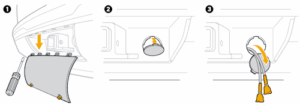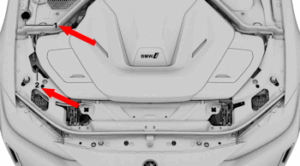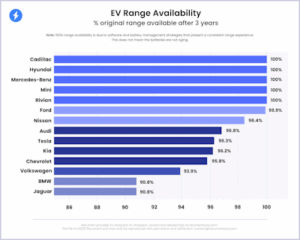Rivian jump start Well, we didn’t finish that sentence, but had to do it. As we prepare to do a Rivian jump start video, we’ve discovered that, like too many other EVs, the wire connections are accessed through a bumper. But for Rivian models, unexpectedly its the rear bumper! See the image below. The wires …
Category: Electric and Electrified Vehicles
Discussions of hybrid, plug-in hybrid and battery powered vehicles and technology.
Permanent link to this article: https://dashboardsymbols.com/2025/12/niro-ev-range-continues-to-surprise/
Permanent link to this article: https://dashboardsymbols.com/2025/12/rivian-jump-start-is-a-pain-in-the/
BMW ices EV jump starts
EV jump starts BMW owner’s manuals leave no room for EV jump starts. Jump start instructions are as follows: “Have only an authorized service center or another qualified service center or repair shop perform the jump-start.” We’ve assembled videos with instructions for jump starting electric vehicles (EVs) from eight manufacturers thus far. We’re doing this …
Permanent link to this article: https://dashboardsymbols.com/2025/11/bmw-ices-ev-jump-starts/
Tech for EVs to power the grid not for everyone
Power the grid I got on a Zoom call the other night that was to discuss a tech program for EVs to power the grid. Turns out its not for everyone. Not even close. The call was to discuss pilot project in Connecticut overseen by a company called Bidirectional Energy. The program will test the …
Permanent link to this article: https://dashboardsymbols.com/2025/11/tech-for-evs-to-power-the-grid-not-for-everyone/
New study sets EV battery range and longevity fears aside
EV battery The belief that an EV battery will fail the or lose large amounts of range remains pervasive in the general populace, beliefs that are gleefully repeated by electric vehicle (EV) detractors, particularly those with interests in the internal combustion engine and/or oil businesses. A new study puts these beliefs to rest. A new …
Permanent link to this article: https://dashboardsymbols.com/2025/11/new-study-sets-ev-battery-range-and-longevity-fears-aside/
Charging and temperature: Kia vs Polestar
Charging and temperature Over the summer, I was more than pleasantly surprised to find the charging and temperature with the Kia produced far different results than the with the Polestar. Warm weather range The Niro topped out over the summer at 325 miles of range at about 85 degrees F. I have charged recently at …
Permanent link to this article: https://dashboardsymbols.com/2025/11/charging-and-temperature-kia-vs-polestar/
Buying a pre-owned EV or hybrid? Find a battery health test
Battery health In a piece about used hybrid vehicle batteries, InsideEVs discussed different vehicle manufacturers and the performance of the their high voltage batteries over time. Near the finish with the recommendation that “you always perform a battery health check before buying a used PHEV.” Well who knows how to do that?? Not so many. …
Permanent link to this article: https://dashboardsymbols.com/2025/11/buying-a-pre-owned-ev-or-hybrid-find-a-battery-health-test/




Niro EV range continues to surprise
Niro EV range A full charge was just completed and the Kia Niro EV range continues to surprise. Cooling temperatures have yet to drop the car’s range to EPA expectations In the heat of summer — 75°+ — Niro regularly hit 325 miles range. As temperatures started down in the fall — 50°-60° — range …
Continue reading